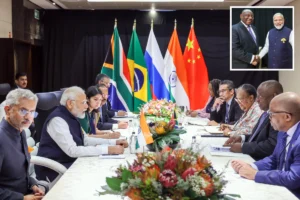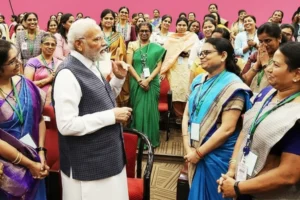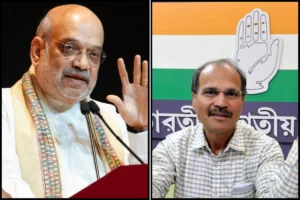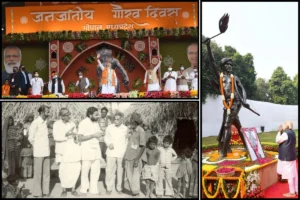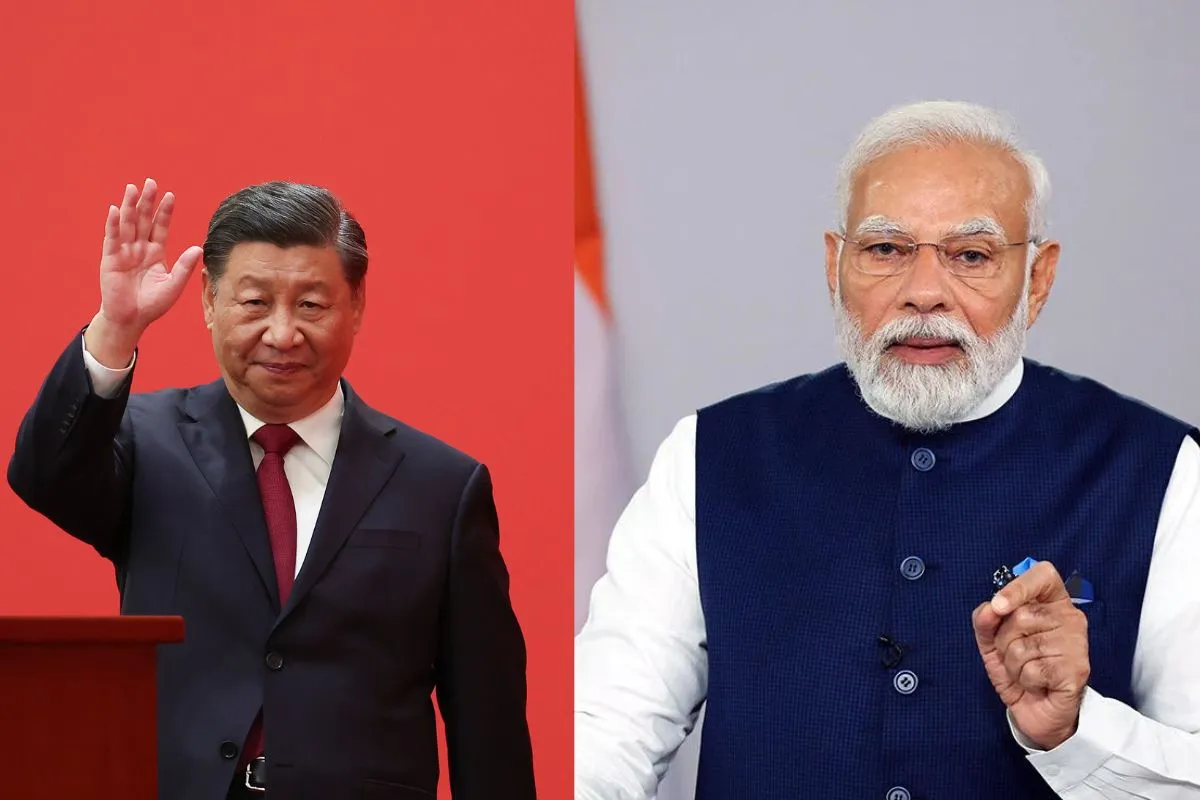
Chinese President Xi Jinping and Indian PM Narendra Modi
Despite all the aggressive attempts by China, New Delhi through its continuous efforts to improve goodwill without business interests is pushing back against Beijing in the crucial region of South Asia, senior defence analyst and professor Derek Grossman said in a piece on the website of the think tank Rand Corporation.
Amid the intensifying strategic confrontation between the United States and China dominating most foreign-policy debates, another important competition is quietly playing out in the South Asia region.“The jostling between India and China for influence in South Asia—from the Himalayas to the islands off the subcontinent in the Indian Ocean—will likely prove crucial to the fate of Washington’s strategy to keep the region “free and open” from Chinese coercion. And the good news, at least for now, is that New Delhi—an increasingly close US partner—has been mostly successful in pushing back against Beijing’s rising influence across the region,” Grossman stated.
According to the author, the South Asia region —comprising Afghanistan, Bangladesh, Bhutan, India, the Maldives, Nepal, Pakistan, and Sri Lanka—has been a hotbed of Sino-Indian strategic competition for years. New Delhi’s concern is that Beijing, through its multiple border confrontations plans to spin a web of alliances to encircle India, on both land and sea and ultimately supplant it as the dominant power over South Asia.
Notably, all the region’s countries, except Bhutan, are participants in China’s Belt and Road Initiative (BRI), a vast economic plan for investment and infrastructure development. Beijing has also secured access to key ports along the Indian Ocean, including Gwadar in Pakistan, Hambantota in Sri Lanka, and Chittagong in Bangladesh, that have caused New Delhi to worry about a so-called string of pearls strategy aimed at hemming India in, the think tank stated.
As per the author, the situation was ‘worrisome’ for India, as China-friendly governments came to power in the Maldives, Nepal, Sri Lanka, and, of course, Pakistan. But, today India has strong ties to the Maldives, Nepal, and Sri Lanka, and it has shored up relations with Bangladesh.
New Delhi has at least matched, if not surpassed, Beijing’s influence with the Taliban in Afghanistan. To be sure, Pakistan remains an intractable problem because of longstanding sovereignty and territorial disputes over the Kashmir region as well as Islamabad’s “all-weather partnership” with Beijing. But bilateral relations between India and Pakistan have not appreciably worsened either.
While India is worried that Bhutan has not included it in border negotiations with China, New Delhi maintains a longstanding relationship with the Himalayan kingdom, allowing it to keep close tabs on the situation to secure its interests. All of this indicates an important inflection point in South Asia.
“India is no longer losing—and may even be winning—its strategic competition with China in the region,” the author stated. Following the US military withdrawal from Afghanistan in August 2021, China seemed like the obvious great power to fill the void. Beijing has long desired access to the Mes Aynak copper mine. In April, a Chinese firm offered the Taliban USD 10 billion to mine lithium deposits. In May, the Taliban agreed to allow China to extend BRI into Afghanistan from Pakistan.
While Beijing has cultivated ties to the Taliban, the reality is China has remained exceedingly cautious because of concerns that the Taliban might secretly harbour and instigate Islamic extremist groups to launch attacks into China’s Xinjiang province, the think tank stated. India is likewise concerned that Taliban-run Afghanistan might once again become a playground for terrorists, especially those who are anti-India and supported by Pakistan, it has taken a gamble and forged working ties with the Taliban.
In June 2022, New Delhi deployed a technical team to its embassy in Kabul to maintain operations in the country. India has also sent humanitarian aid in the form of food and medical supplies as well as development assistance. These signs of goodwill, which do not necessarily have an attachment to business interests, have been welcomed by the Taliban, and the regime is reciprocating.
For example, the Taliban last December reportedly asked New Delhi to complete 20 stalled infrastructure projects in Afghanistan, in an initiative that would rival China’s BRI. In February, India also announced funds budgeted for Afghanistan’s reconstruction, garnering applause from the Taliban, the think tank stated. The author believes that India may also benefit from strained relations between the Taliban and their patron, Pakistan.
Notably, the attacks in Pakistan by the Taliban’s sister group, Tehreek-e-Taliban Pakistan (TTP) have risen since the end of a cease-fire in 2021, including a February incident in which five Pakistani soldiers were killed. The controversy over the disputed Durand Line separating Pakistan and Afghanistan has given India additional opportunities to serve as an alternative patron. This could harm China’s standing as well since it is closely aligned with Pakistan and shares many of Islamabad’s goals in Afghanistan, as per Rand Corporation. The India-China competition is fierce, also in Bangladesh, but the author believes that India clearly has the edge.
“This should not be surprising, given that Bangladesh, formerly East Pakistan, in large part owes its very independence since 1971 to India’s military support against Pakistani forces,” he stated.
Nevertheless, China has been making inroads there for some time. In 2016, Chinese President Xi Jinping made a visit to Dhaka, inking 27 BRI agreements worth around USD 24 billion and making China the biggest foreign line of credit to Bangladesh. On the other hand, Prime Minister Narendra Modi pledged USD 2 billion in assistance in 2015.
Beijing and New Delhi both have access to Chittagong, Bangladesh’s principal seaport along the Bay of Bengal, and China last year finished construction of the Padma Multipurpose Bridge to cut down transit times between Chittagong and Dhaka. Additionally, both sides are jockeying to develop Mongla and Payra ports. Through BRI, China has pledged to develop Bangladesh’s road and rail infrastructure, as well as its power grid. China also remains a top trading partner, the Rand Corporation stated.
Despite all the frictions, India has developed into Bangladesh’s most important strategic partner in recent years. Bangladeshi State Minister for Foreign Affairs Shahriar Alam noted in May that Bangladeshi-Indian ties were “unparalleled, incomparable to any other achievements that bilateral neighbouring countries have made despite having some issues.”
He further observed that while China was “a friend,” especially in the economic domain, Bangladesh’s relationship “with India is at a different level because of the history.” Indeed, India has invited Bangladesh to New Delhi as its special guest at next month’s G-20 summit.
Some of this sentiment is undoubtedly baked into New Delhi’s traditionally close ties to the Awami League, the Bangladeshi political party that has been in power for nearly 15 years. However, Chinese mistakes have played a role as well. Most notably, since Xi’s visit to Dhaka in 2016, BRI projects have generally stalled. The Padma Multipurpose Bridge is one of the few examples of tangible progress.
(ANI)
To read more such news, download Bharat Express news apps








